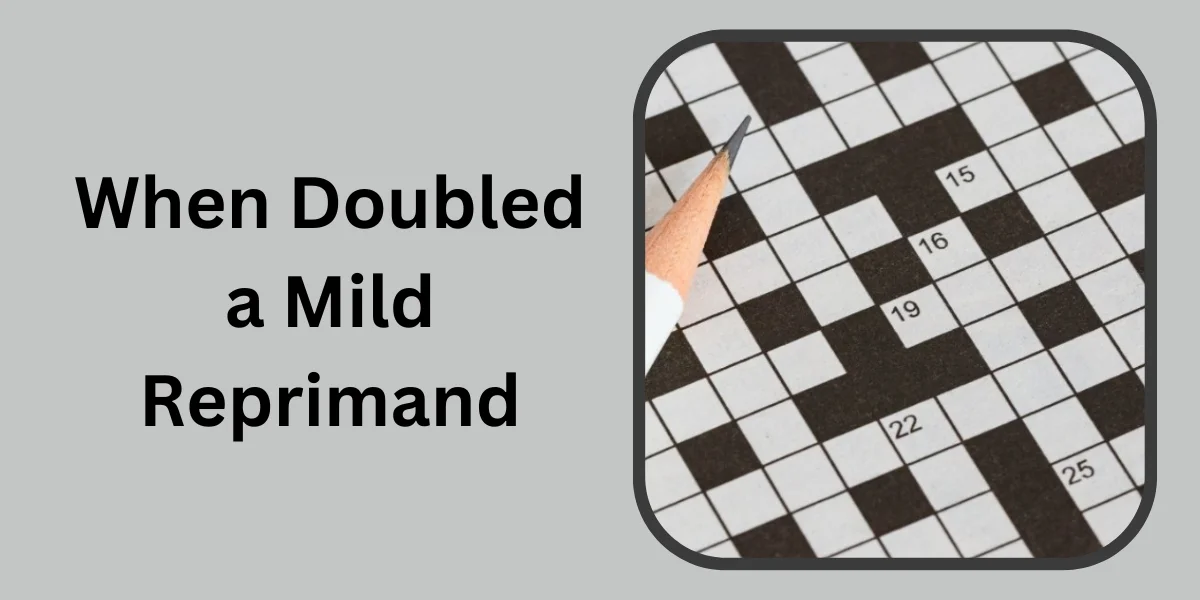Introduction to the concept of mild reprimands and their effectiveness
Imagine this: You’re in a meeting, and someone makes a small mistake. Instead of calling them out harshly, you choose to address it gently with a mild reprimand. But what if you were to double that gentle nudge? Surprisingly, this approach can yield better results than you might think! Mild reprimands have long been recognized as effective tools for correction and guidance. However, when doubled, they create an even more impactful response.
This blog will explore the fascinating dynamics behind doubling a mild reprimand—why it works so well and how to implement it effectively in various scenarios. Whether you’re managing a team at work or navigating parenting challenges at home, understanding the psychology behind this technique can transform your interactions into opportunities for growth and improvement. Ready to dive deeper? Let’s go!
The psychology behind doubling a mild reprimand
Doubling a mild reprimand taps into an interesting psychological principle: the power of reinforcement. When you issue two similar corrections in quick succession, it amplifies their significance. This technique draws attention and encourages reflection.
Additionally, repetition aids memory retention. By repeating a mild reprimand, you’re making the message stick. The recipient is more likely to remember what went wrong and why it’s important to change.
Moreover, this method can create an emotional response without overwhelming negativity. It allows individuals to understand that while they’ve made a mistake, it isn’t catastrophic. They receive guidance rather than harsh criticism.
Addressing issues with a gentle touch fosters trust and openness. People feel supported when they recognize their missteps but also sense encouragement to improve through constructive feedback.
Examples of how doubling a mild reprimand can be more effective in different situations
In a workplace setting, imagine a manager addressing a team member who consistently arrives late. A simple reminder about punctuality might not resonate. However, if the manager gently reminds them twice—first with an emphasis on its impact on teamwork and subsequently highlighting personal responsibility—the message can stick more effectively.
Consider parenting as well. When a child forgets to do their chores, instead of just saying “please remember next time,” reinforcing it by saying “I know you want to help out” followed by “Let’s set reminders together” offers both guidance and encouragement.
In educational environments, teachers can also utilize this technique. If students are distracted during lessons, stating “Let’s focus now” alongside “This will help you in the long run” reinforces expectations while nurturing motivation for improvement.
How to effectively double a mild reprimand
To effectively double a mild reprimand, clarity is key. Start by addressing the initial behavior directly. Use simple language to avoid confusion.
After delivering the first reprimand, pause for a moment. This brief silence allows the recipient time to reflect on what was said.
Next, reinforce your message with a second reminder. Frame it differently but keep the core issue intact. For example, if someone missed deadlines consistently, highlight both their impact and potential consequences.
Ensure that your tone remains calm and constructive throughout. The goal is to encourage improvement rather than instill fear or resentment.
It can also be beneficial to provide examples of acceptable behavior after each reprimand. This not only clarifies expectations but also offers guidance moving forward.
Follow up later on progress made since the double reprimands were issued—this shows you care about their growth and success in overcoming challenges.
Potential drawbacks and considerations when using this technique
While doubling a mild reprimand can be effective, there are potential drawbacks to consider. One risk is misinterpretation. The recipient might perceive the doubled reprimand as excessive or harsh, leading to defensiveness rather than understanding.
Another concern is consistency. If this technique isn’t applied uniformly across different situations, it may confuse individuals about expectations and consequences. Consistency helps maintain trust in leadership or authority figures.
Additionally, context matters significantly. A mild reprimand works well in some environments but could backfire in others where sensitivity levels are higher. Understanding your audience is crucial before employing this approach.
Using this method too frequently can dilute its impact over time. When people become accustomed to receiving reprimands regularly, the effectiveness diminishes, potentially leading to disengagement or resentment instead of motivation and improvement.
Real-life success stories and research supporting the effectiveness of doubling mild reprimands
Research shows that doubling a mild reprimand can yield impressive results in various contexts. One fascinating study conducted in educational settings demonstrated that teachers who used this technique saw improved student behavior and engagement. Instead of merely addressing disruptive actions once, the dual approach reinforced expectations more effectively.
In corporate environments, managers have reported success using doubled reprimands during performance reviews. Employees responded positively when feedback was delivered twice, prompting them to take their shortcomings seriously while still feeling supported.
A non-profit organization implemented the strategy with volunteers facing attendance issues. By gently reiterating the importance of commitment, they observed a significant increase in participation rates.
These stories highlight how strategically applying this method fosters accountability without damaging relationships or morale. Each instance emphasizes clear communication’s role in facilitating understanding and growth within individuals and teams alike.
Conclusion: When and how to use this technique for maximum results in
Using the technique of doubling a mild reprimand can be highly effective when applied thoughtfully. It’s essential to recognize specific scenarios where this approach shines. For instance, in workplace settings, addressing behavior twice with gentle reminders can reinforce expectations without escalating tensions.
Timing matters too. A well-placed double reprimand might work wonders during performance reviews or team meetings. The key is ensuring that your delivery remains calm and measured throughout the process.
Consider the individual receiving feedback as well; tailoring your approach based on their personality will yield better results. Some may respond positively to directness, while others might need more subtlety.
This method also encourages reflection and accountability among peers, creating an environment where constructive criticism thrives rather than festers into resentment.
Employing this strategy effectively can foster stronger relationships and improve overall communication within any setting. By understanding when doubled a mild reprimand is appropriate, you hold the power to create positive change through thoughtful guidance.

